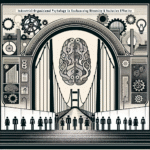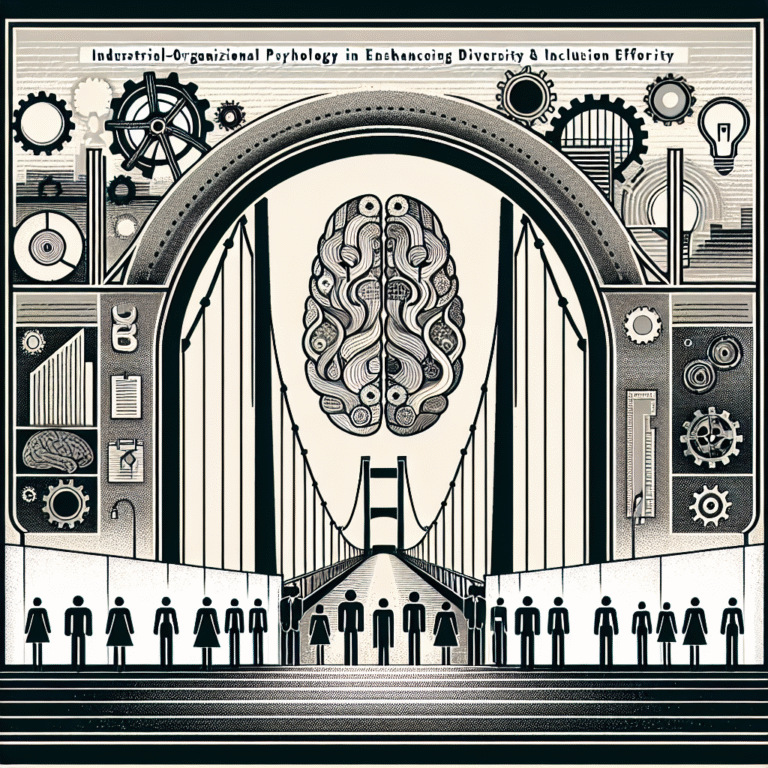
Introduction
In a world where corporate landscapes are often dictated by the size of incentives and monetary rewards, it’s time to shift the narrative. Welcome to the revolution of engagement: Beyond Incentives: Creating a Culture of Intrinsic Motivation. Research shows that a motivated workforce feels a genuine commitment toward their work, leading to increased productivity, innovation, and job satisfaction. This article delves deep into how organizations can foster a culture where intrinsic motivation thrives, going beyond mere financial incentives to unlock the potential of their teams.
Understanding Intrinsic Motivation
The Essence of Intrinsic Motivation
Intrinsic motivation refers to engaging in activities for their inherent satisfaction rather than for some separable consequence. When employees find joy and fulfillment in their work, they tend to perform at higher levels. Decades of research by psychologists like Edward Deci and Richard Ryan have established that intrinsic motivation is fundamentally tied to psychological needs: autonomy, competence, and relatedness.
Why Intrinsic Motivation Matters
Organizations focusing solely on financial incentives often miss the larger picture. Beyond Incentives: Creating a Culture of Intrinsic Motivation can lead to:
- Higher Employee Retention: Employees who feel motivated by intrinsic factors are less likely to leave.
- Enhanced Creativity: Teams that enjoy their work are more innovative and willing to take risks.
- Increased Job Satisfaction: A culture that prioritizes passion fosters a positive atmosphere.
The science is clear: when employees are intrinsically motivated, everyone wins.
Key Elements for Fostering Intrinsic Motivation
1. Cultivating Autonomy
One major driver of intrinsic motivation is autonomy—the freedom for individuals to make choices about their work.
Case Study: Atlassian’s "FedEx Day"
Atlassian, an Australian software company, implemented "FedEx Day," where employees were allowed to spend 24 hours on anything they wished, even if unrelated to their daily tasks. The result? Unconventional but remarkable projects emerged, leading to innovative solutions and a buzz of excitement around creativity.
Analysis: This initiative deduces that when employees have autonomy, they’re more likely to engage deeply and uncover unexpected outcomes.
2. Enhancing Competence
Feeling competent is a fundamental psychological need. Organizations should foster environments where employees can develop skills and receive constructive feedback.
Case Study: Google’s "20% Time"
Google’s iconic "20% Time" allows employees to spend a fifth of their workweek on projects that interest them, free from managerial oversight. This initiative unleashed a plethora of successful products and services, like Gmail and Google News.
Analysis: Allowing employees the space to explore strengthens their belief in their abilities, augmenting intrinsic motivation.
3. Fostering Relatedness
A sense of connection with colleagues and the organization enhances intrinsic motivation. Employees are more likely to go the extra mile when they feel part of a community.
Case Study: Zappos
Zappos, known for its stellar customer service, fosters a culture of relatedness by empowering employees to build lasting relationships among themselves and with customers. Their emphasis on emotional connections has created a workforce that genuinely cares.
Analysis: Zappos showcases that investing in relatedness can create a strong foundation for a motivated and dedicated workforce.
Practical Strategies for Building a Culture of Intrinsic Motivation
Creating Meaningful Work Experiences
To establish Beyond Incentives: Creating a Culture of Intrinsic Motivation, organizations can implement strategies that make work meaningful:
-
Align organizational purpose with individual values: Employees want to feel that their roles contribute to something larger than themselves.
- Encourage storytelling: Sharing success stories can create emotional connections and illustrate the impact employees have.
Recognizing and Celebrating Success
Recognition doesn’t always have to come in the form of bonuses. Celebrate milestones and accomplishments in meaningful ways. Crafting personalized notes of appreciation or organizing team celebrations can heighten intrinsic motivation.
Providing Opportunities for Professional Growth
Encourage continuous learning and development. Offering workshops, seminars, and mentorship programs can empower employees to enhance their skills and foster a growth mindset.
Cultivating a Safe Environment for Risks
Creating a psychologically safe workspace where employees can express ideas and take risks without fear of reprisal is crucial. Failure should be viewed as an opportunity for learning rather than a setback.
Case Study: IDEO
IDEO, the design and consulting firm, embraces a culture where experimentation is encouraged. Their famous brainstorming sessions allow for wild ideas, supporting a safe space for creativity. By allowing team members to play and experiment, IDEO fosters a culture fundamentally rooted in intrinsic motivation.
Analysis: IDEO exemplifies that innovation thrives in environments where employees have the freedom to explore.
Building Social Connections
Encourage team-building activities, mentorship programs, and social events to foster rapport. Strong relationships boost morale and create a cohesive workplace culture.
Implementing Change: A Step-by-Step Framework
Step 1: Assess Current Culture
Begin by evaluating your organization’s current culture. Gather feedback from employees about their intrinsic motivators and challenges they face.
Step 2: Define Core Values
Align the company’s core values with intrinsic motivational factors. Ensure everyone understands and believes in the organization’s mission.
Step 3: Launch Pilot Programs
Start small. Implement initiatives such as autonomy-driven projects or team-building events before rolling out widespread changes.
Step 4: Gather and Act on Feedback
After implementing new strategies, continually gather feedback. Be open to adjustments and show employees that their opinions matter.
Step 5: Celebrate and Share Wins
Publicly recognize teams and individuals who embody these cultural shifts. Recognition enhances motivation—both intrinsically and extrinsically.
The Long-term Impact of Intrinsic Motivation
Creating a culture of intrinsic motivation isn’t merely a trend; it’s a strategic advantage. Organizations that prioritize intrinsic motivation reap the benefits of a more engaged, innovative, and dedicated workforce.
Quantifying the Results
Consider employing metrics to examine employee engagement, retention rates, and productivity levels to assess the impact of these initiatives. A commitment to this cultural shift will manifest in measurable growth over time.
Conclusion
The shift Beyond Incentives: Creating a Culture of Intrinsic Motivation isn’t just about encouraging a feel-good atmosphere—it’s about unlocking the true potential of your workforce. By focusing on autonomy, competence, and relatedness, organizations can cultivate environments where employees are not just working for paychecks, but are inspired to innovate and excel.
As we move forward, let’s inspire one another and remember: when people are intrinsically motivated, the possibilities are limitless.
FAQs about Intrinsic Motivation
1. What is intrinsic motivation?
Intrinsic motivation is engaging in activities for their inherent satisfaction, rather than for external rewards.
2. How can I assess my team’s intrinsic motivation levels?
Conduct anonymous surveys that focus on employees’ feelings about their work and what drives them to excel.
3. How long does it take to build a culture of intrinsic motivation?
Creating this culture is a gradual process that may take months to years to fully take root, but small changes can yield immediate benefits.
4. What if employees are primarily motivated by financial rewards?
While financial incentives are important, it’s crucial to introduce elements that promote intrinsic motivation alongside them.
5. Can small businesses implement these strategies?
Absolutely! Many intrinsic motivation strategies are low-cost and revolve around cultural shifts rather than monetary investments.
By addressing these common questions and providing detailed insights, we empower ourselves to lead the charge Beyond Incentives: Creating a Culture of Intrinsic Motivation that radically transforms workplace dynamics for the better.


















